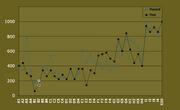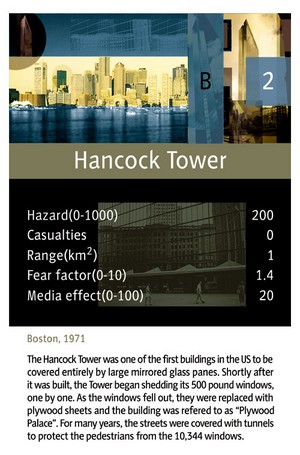|

The 60-story Hancock Tower in Boston was built in the early seventies. It was one of the first skyscrapers covered entirely by large mirrored glass panels. The intention was that the building should reflect the city and the sky. But the nice intentions were let down, when the Tower began shedding its 500-pound windows, endangering the lives of the pedestrians below.
The window material had been used before, in much smaller buildings, where it caused the same problems, but the Hancock designers overlooked this fact. As the windows fell out they were replaced with plywood sheets and the building was commonly referred to as �the Plywood Palace�.
For years the streets in the neighbourhood were covered with tunnels to protect pedestrians from the falling glass.
Apart from the window problem, the tower had a problem staying firm in windy weather. Actually, the swaying was so bad that people on the higher floors had nausea. The swaying problem was caused by a mistake in the excavation, done long before the tower had even been built. The failure was so serious that the tower was in risk of falling down. A horrifying danger was averted by the construction of a stabilising damper.
Comment this page
 
Links and references:
Information from the Advanced Engineering for Buildings and Structures:
http://www.sgh.com/practiceareas/buildingtechnolog...
and:
http://www.bostons-best.net/Hancock.htm
|

|
|



